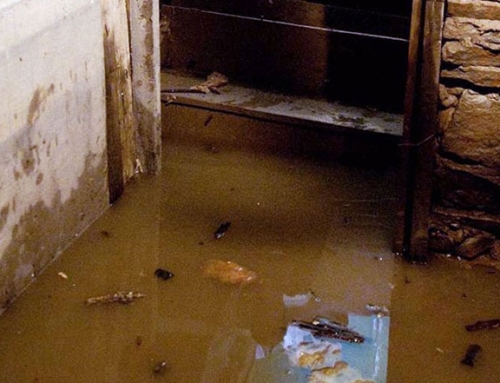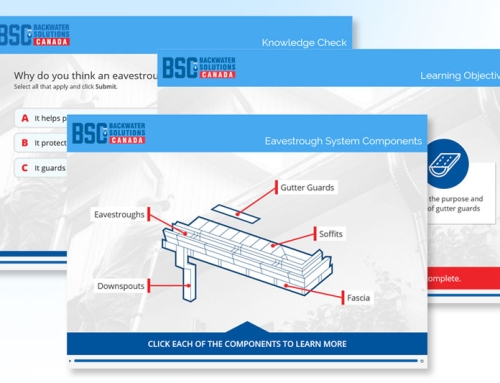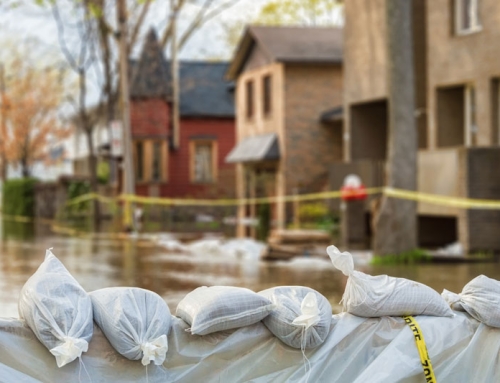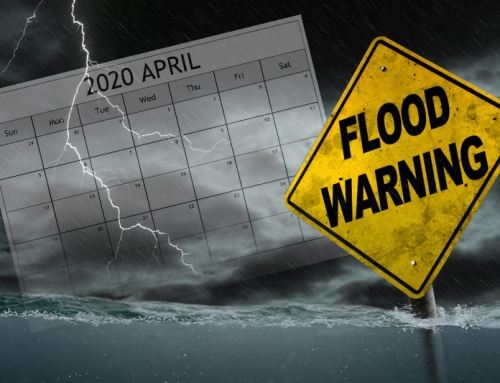How to protect your home from sewer backup
Do you remember, back in August 2018, when Toronto got slammed with rain? I sure do – I was driving up Yonge Street and saw water spewing out of the sewer grates like fountains. Weather reports said that 100 millimetres of rain fell in just two hours. Fortunately, there was no flooding on my street, but a lot of homes and businesses, especially in downtown Toronto, had flooded basements. There was just too much rain for the city’s sewer system to handle. That storm caused $80 million in insured damage. (source: Insurance Bureau of Canada)
It might have been a “once in a century” event, but we won’t have to wait 100 years for another big rainstorm. Climate change is real, and these types of storms are going to happen more often. Just last year, severe weather events caused $1.3 billion in insured damage across Canada. (source: IBC)
But I’ve never had a flooding problem… and I have insurance!
Just because you’ve never had a flooded basement doesn’t mean that it won’t happen. You might not live near the lake or on a flood plain, or your home might be on higher ground. But that won’t always protect you against a flash flood or sewer backup.
Have you ever seen streets flooded with water because of a big rainstorm or snow melt? That’s overland flooding. That water can get into your basement if it reaches your house, through window wells, doorways, and other points of entry. Water can also get into your basement through sewer backup. The city’s sewer systems can’t handle a lot of rain in a short period of time… and that water can end up backing up into your basement.
Did you know that it costs about $43,000 to repair a flooded basement? (source: IBC) “That’s OK,” you say, “I have home insurance – I’m covered.” Maybe not! Some insurance policies only protect against certain types of water damage. You often have to buy additional coverage for BOTH overland flooding and basement flooding due to sewer backup.
How can I protect my home against flooding?
Prevention is better than insurance. You might not be able to protect your home against overland flooding. But you can take the following steps to prevent basement flooding due to sewer backup:
1. Install a backwater valve. This valve is located on the main water line that moves wastewater from your sinks and toilets into the sewer line, and allows water to flow in only one direction. When there is a lot of rain or the municipal wastewater system fails, water can back up from the sewer system into your house. When this happens, the backwater valve closes, preventing the backflow of sewage. Your house might already a backwater valve. But if you don’t, get one installed. They’re so effective that many municipalities provide subsidies to cover part of the installation cost.
2. Maintain your backwater valve. Your backwater valve needs regular maintenance. Buildup of waste material and debris over time can cause it to fail. And if you don’t maintain it, your insurance company could reject your claim if your basement floods due to sewer backup. Don’t let that happen. Hire a reputable company to inspect, service, and certify your backwater valve.
3. Disconnect from the municipal system. Your downspouts direct rain and melting snow from your roof to a drainage system, which connects to the sewage system. Too much rain can overwhelm the municipal drainage system, which could back up into your basement. Many municipalities have asked homeowners to disconnect their foundation drains from the municipal system, and to direct downspouts into the yard away from the foundation to drain naturally. Some will even offer a grant to cover the cost of disconnecting the downspout.
4. Dump grease, fats, and oils in the recycling bin, NOT down the drain. Grease, fats, and oils can cause sewage backup, as they will solidify and build up over time in the sewer main or plumbing. Flushing your pipes with hot water will not help, as this will just move the grease, fats, and oils slightly further in the plumbing system.
5. Grade and slope your property. The ground around your home’s foundation should slope down and away into the yard. If it doesn’t, water can pool around your foundation, seep through cracks in the walls of your foundation and into your home, and even cause basement flooding. The simplest fix is to build the ground up around your foundation: make it 10 to 15 centimetres higher than the ground that is 1.5 metres away from your home.
Contact Backwater Solutions Canada for more information on protecting your home from basement flooding due to sewer backup or installing and maintaining your backwater valve.












